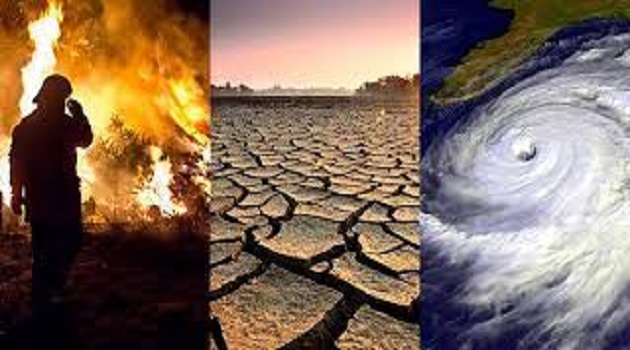Climate change mitigation: Who bears world’s energy transition costs?
Climate change mitigation: Who bears world’s energy transition costs?

While most African countries strongly support global climate ambitions, the question of who must bear the social and economic costs associated with the world’s energy transition is of global significance, Mr. Nesbert Samu, the Chief Director of Parliamentary Programmes in the Parliament of Zimbabwe has said.
Mr. Samu made the remarks during the Common Market for Eastern and Southern Africa (COMESA) Regional Pre-Twenty-Seventh Conference of Parties (COP27) Technical Preparatory Meeting held in Harare from 6 to 7 October 2022.
During COP26, parties adopted the Glasgow Climate Pact – a series of three overarching cover decisions that provide an overall political narrative of the Conference of the Parties (COP).
According to the Chief Director of Parliamentary Programmes in the Parliament of Zimbabwe for the first time in the United Nations Framework Convention on Climate Change (UNFCCC) process, there is a reference to phasing down unabated coal power and phasing out inefficient fossil fuel subsidies.
There was concern that human activities have caused around 1.1 °C of global warming to date and that impacts are already being felt in every region. CP26 compelled an urgent need to enhance ambition and action in relation to mitigation, adaptation, and finance in pursuit of the ultimate objective of the Convention and its long-term global goal.
It emphasised the important role of non-Party stakeholders, including CSOs, indigenous peoples, local communities, youth, children, local and regional governments, and other stakeholders.
“In terms of mitigation, the Glasgow Pact calls for rapid, deep, and sustained reductions in global greenhouse gas emissions to limit global warming to 1.5 °C. It invites Parties to consider further actions to reduce by 2030 non-carbon dioxide greenhouse gas emissions, including methane under the Work Programme on Mitigation and also urges parties to accelerate mitigation action to transition towards low-emission energy systems, by implementing a number of initiatives.
These include clean power generation and energy efficiency measures, as well as the phasedown of unabated coal power and phase-out of inefficient fossil fuel subsidies. The pact calls for targeted support to the poorest and most vulnerable in line with national circumstances and recognizing the need for support towards a just transition as well as protecting, conserving, and restoring nature and ecosystems, including forests and other terrestrial and marine ecosystems,” Mr. Samu said.
The impacts of the implementation of response measures are understood under the Convention as the effects arising from the implementation of mitigation policies, programs, and actions taken by Parties under the Convention, Kyoto Protocol, and the Paris Agreement
The Convention and its related instruments seek to minimize the negative impacts and maximize the positive ones. Provisions of response measures are enshrined in the Convention (Article 3.5, Article 4.8), Kyoto Protocol (Article 2.3, Article 3.14), and the Paris Agreement (Article 4.15).
Mr. Samu disclosed that parties may not only affected by climate change, but also by the impacts of the measures taken in response to it;
“Parties shall take into consideration in the implementation of this Agreement the concerns of Parties with economies most affected by the impacts of response measures, particularly developing country Parties (Article 4.15 of the PA). The Paris Agreement takes into account the imperatives of a just transition of the workforce and the creation of decent work and quality jobs in accordance with nationally defined development priorities.”
The Chief Director of Parliamentary Programmes in the Parliament of Zimbabwe said while African countries strongly support global climate ambitions, the question of who must bear the social and economic costs associated with the world’s energy transition is of global significance.
Mr. Samu said the speed, scale, and timing of that transition will matter, as well as the stakeholders’ capacity to take and implement the decisions necessary in that area.
“There has been criticism that the low-carbon development paradigm emphasizes the “green” over the “justice” elements, presenting a serious problem, as an unjust transition is likely to prove inherently unsustainable.
“Where does Africa position itself in this global dynamic? Who will decide the orientation of the transition and who will formulate a definition of “justice” to anchor the transition process? And, most significantly, has Africa positioned itself to capitalize on the opportunities presented by the transition?” Mr. Samu retorted.
In terms of carbon trading, COP 26 adopted the rules, modalities, procedures, and guidelines for the new carbon trading mechanism established by Article 6, paragraph 4. It also established the Supervisory Body, mandated to develop provisions for the development and approval of methodologies, validation, registration, monitoring, verification and certification, issuance, and renewal, and seeks to protect Africa’s interests in the carbon trading space.
A Forest and Land Use Declaration was tabled at COP26. Zimbabwe and other African Countries signed up during the World Leaders Summit.
At least 141 countries committed to halting and reversing forest loss and land degradation by 2030 by strengthening their efforts to conserve and restore forests and other terrestrial ecosystems and accelerate their restoration.
Under the Global Methane Pledge, a scheme to cut 30% of methane emissions by 2030 was agreed upon by more than 100 countries. Methane is currently responsible for a third of human-generated warming.
Source: Inghananewstoday.com/pikedmedia.co.zw




